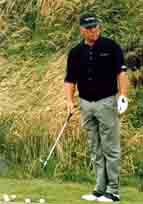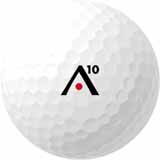Wound balls will soon be history
End of an era in 2002
_10.jpg?width=1600&aspect_ratio=16:9)
As the persimmon-headed club makes a comeback (see News), the wound ball will soon be added to the feathery and gutta percha, in the glass cabinets of golf memorabilia. According to one source, the ball, which was the standard for nearly three-quarters of a century, with a hundred yards of eleastic wrapped around a liquid core with a Surlyn-type cover, is on the way out.
Mark O'Meara was among the first to sing the praises of solid balls as early as 1997, which drew which prompted sniggers from other pros who insisted that wound balls were necessary for feel, spin and control, especially around the greens. They stopped joking and joined him when O'Meara won the US Masters and Open Championship in 1998 and was named PGA Tour Player of the Year. The transformation has been so dramatic that no winner on the PGA, Senior PGA, Buy.com, LPGA, European, Japan or Canadian tours used a traditional wound ball in 2001, according to a leading survey. That's just about every major Tour on the planet, and it marked the first time in the history of the PGA Tour that no winner used a wound ball. In 1999, solid balls accounted for only seven Tour wins.
Technically the Maxfli Revolution and A-10 still have a thin rubber thread around a large rubber core, though the company promotes them as 'multi-layer, solid-core' balls. "We would still classify that as a wound ball, but it's certainly not the traditional wound golf ball most people think of," says Herb Boehm, general manager of golf ball operations for Acushnet, the parent company of Titleist. Titleist balls remained the leader on the PGA Tour, used by the winners of 32 of the 46 tournaments in 2001. Nike was next with six wins, five by Tiger Woods and one by David Duval. Solid balls have a lower spin rate, resulting in straighter shots, but didn't offer enough control until materials were developed that allowed coverings to be thin enough to do so yet strong enough to resist cuts. "Solid balls went farther and straighter, but that in itself wouldn't work," Boehm said. "Once technology allowed us to make thinner covers and retain control, the transition away from wound balls became very fast." Titleist, however, is one of few companies still making traditional wound balls, but Boehm said the demand has dropped so sharply that this will probably be the last year of production. "Soon you will see those displays with the feathery and the other golf balls of the past, and the wound ball will be beside them. But the way technology is going, it won't be long before today's balls are part of that display, too," said Boehm. Which type of ball do you prefer? Is the wound ball still in your bag or have you elevated to solid ones. Tell us what ball you use and why, on the Forum. *John Davis writes for the 'Arizona Republic' newspaper. |



